 Sex and cinema in an open age. 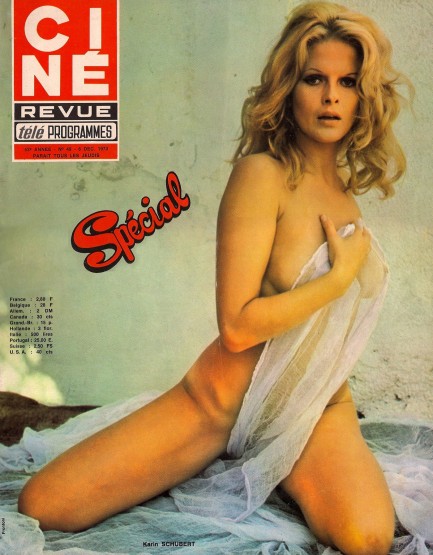
When we went to Paris a couple of months ago we mentioned that we found a stack of Ciné-Revue magazines in Le Marché aux Puces de Saint-Ouen. Their dimensions make for extra work because we have to scan every page in two pieces and put them together in Photoshop, and even more daunting, any two-page spreads have to be scanned in four pieces and assembled (this is actually true for all the tabloids we post). That’s why we get a bit lazy about it sometimes. Yeah, yeah, we know—get a bigger scanner. Easier said than done, unless someone wants to mail us one. Anyway, we managed to get some pages together from the above issue of Ciné-Revue published today in 1973. Ciné-Revue originated out of Belgium in 1944 and was the premier French-language cinema magazine there and in France for many years. Today it remains popular, making it one of the longest-lived cinema magazines as well. On the cover of this one you get German softcore and hardcore actress Karin Schubert, and inside you get John Wayne, Pia Giancaro, Brigitte Bardot, Jean Gabin, and an artful nude shot of impossibly handsome Austrian actor Helmut Berger. You’re welcome, girls, but please don’t start doing internet searches trying to find out what he looks like now—you won’t be happy. Berger also appears on the back of the mag. Regarding the Schubert cover, the line between mainstream cinema and porn was never blurrier than back then, and Ciné-Revue reflected that with its features of hardcore and softcore performers. Could you imagine such actresses routinely appearing in, say, Rolling Stone, and being given equal standing with mainstreamers? Nevertheless, popular American media is heavily porn-influenced, even if the seed, so to speak, goes unacknowledged. What is a Sports Illustrated swimsuit issue about, for example, with its models wearing not swimsuits, but rather paint on their fully waxed bodies? When cinema first developed into an industry many filmmakers thought of movies as simply a motile version of photography, or painting, or sculpture. Occasional nudity was a feature of the new medium, but a funny thing happens when you add motion and character development to the static nude—Michelangelo turns into Brazzers. Today, all nudity in American cinema is on some level political. No? Then why is it that only in American cinema there is such a proclivity for the clothed sex scene? It raises a question. Is it possible for both men and women, gay and straight, to celebrate their sexuality without conflict? Maybe, but only with more economic equality for women, less stigmitization of homosexuality, less racism, and more understanding that we are—male and female, gay and straight, green and purple—biologically driven by sexual desire. Looking at the Schubert image above, we’re reminded of a time (in which we were basically zygotes, but go with us here) during which mainstream movies asked questions about freedom for versus exploitation of women, and how commerce in an age of mass media impacts women’s security versus the ideal of sexual freedom. For instance, how do we have sex and sexual aspiration but also have a safe pressure release for the millions who aren’t having sex in any given week or year? Can healthy sex and porn safely co-exist in the same society? Is female nudity in mass media exploitative by definition? We post nude images here because we think they're beautiful. Does our supposedly honorable intent make any difference in terms of whether the images are exploitation? All these questions are implcit in much of what we do on Pulp Intl. On another note, we had to go back to France on short notice, but to Bordeaux this time, and we’re there at this moment. So maybe hanging out with the always philosophical French made us write this missive. Possibly some fine red wine has contributed. Anyway, we will scour Bordeaux for more wine—er, pulp—but especially Ciné-Revue, as we’re very interested in 1970s international movie stars, and this magazine gave them as much exposure as any publication we’ve seen. We have eighteen scans below, and more from Ciné-Revue to come. 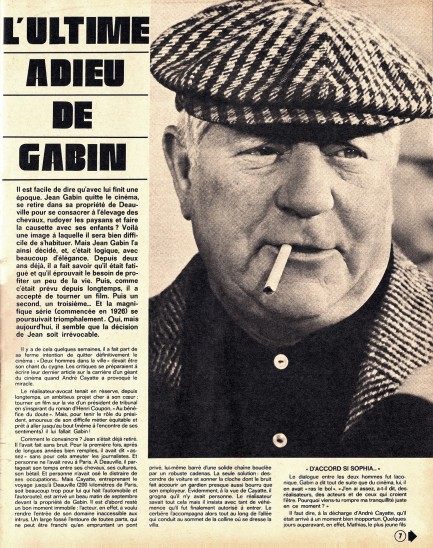 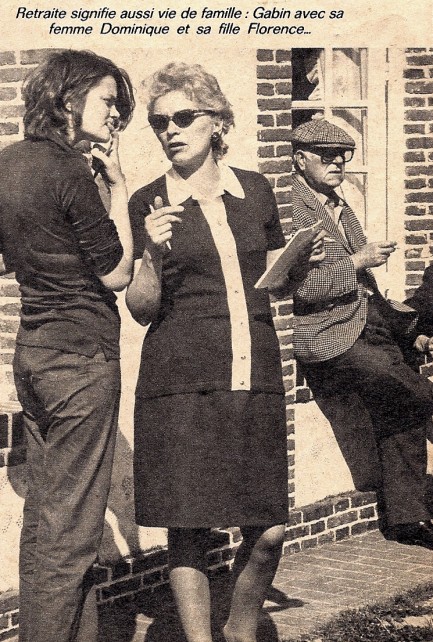 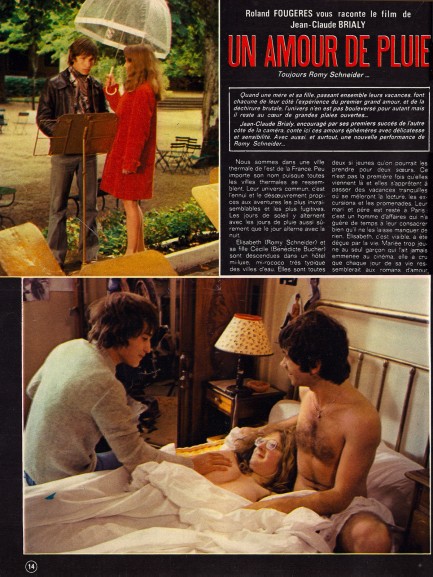  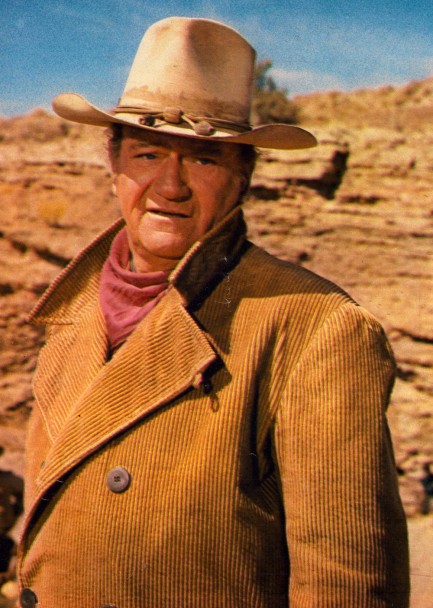 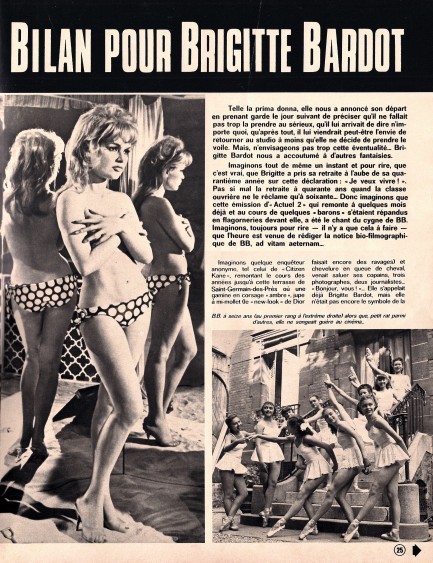 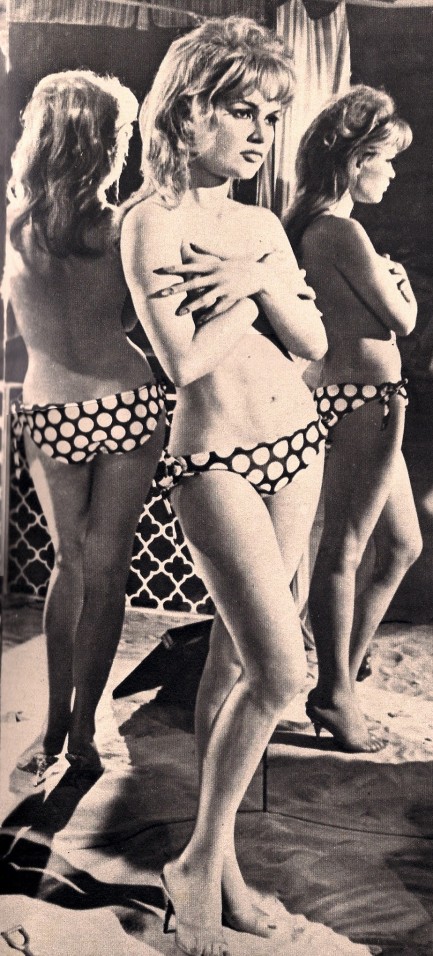 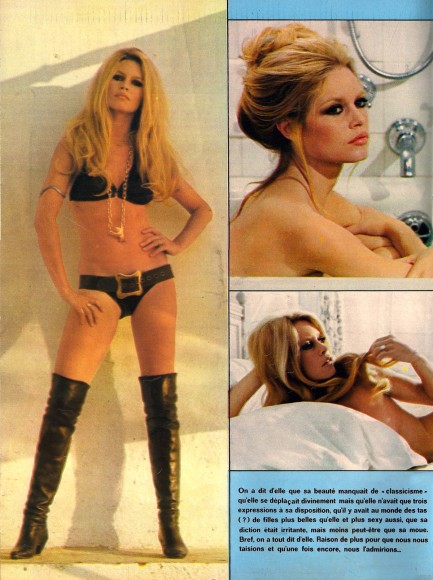 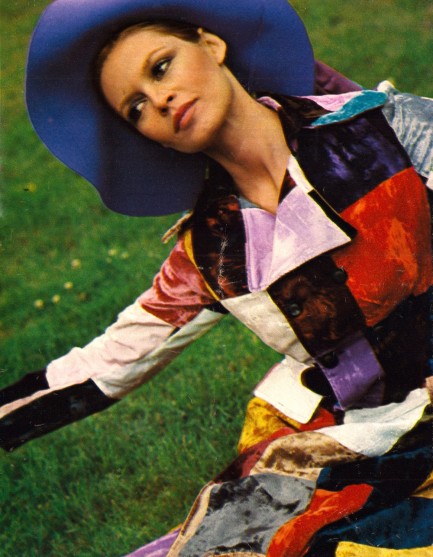 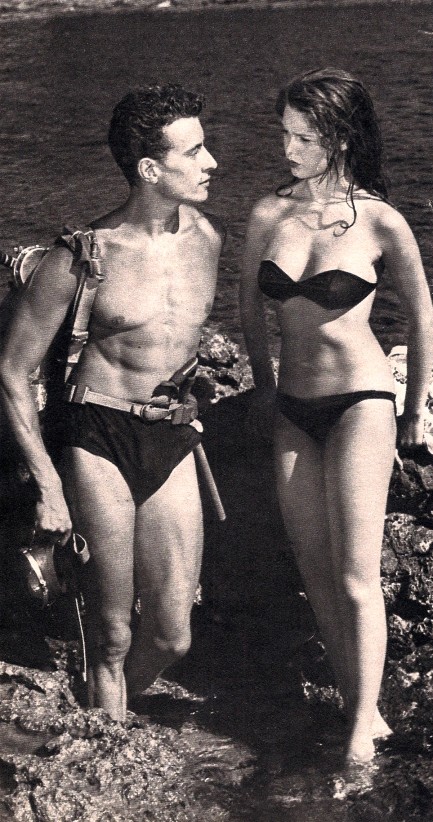 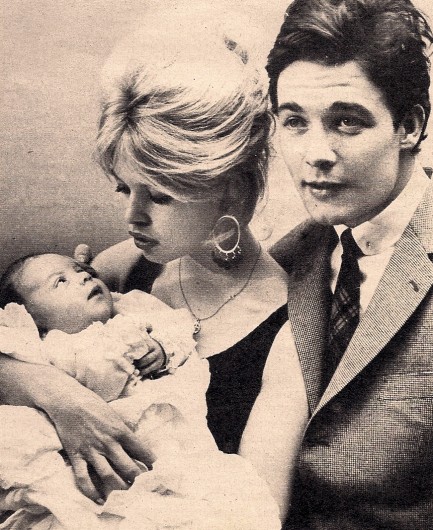 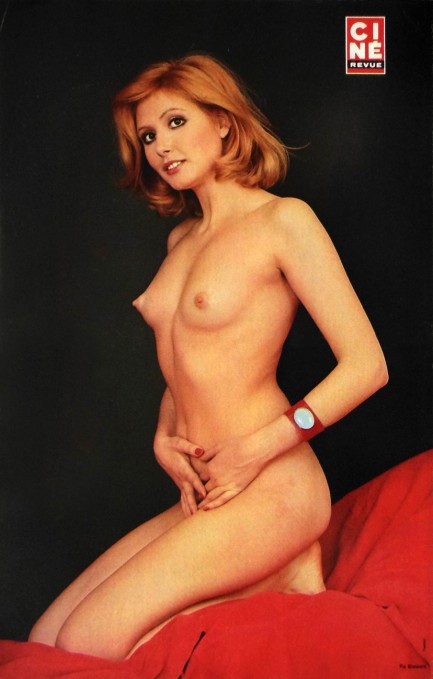 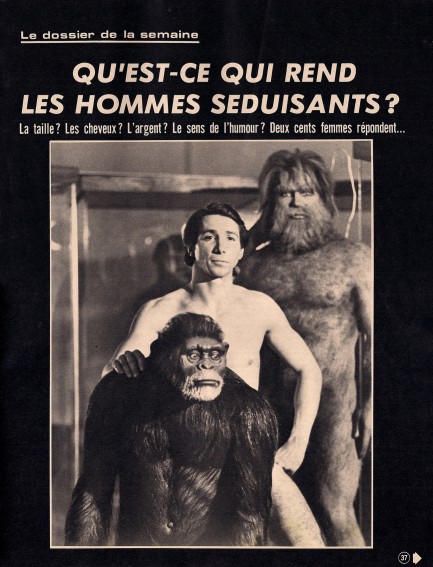 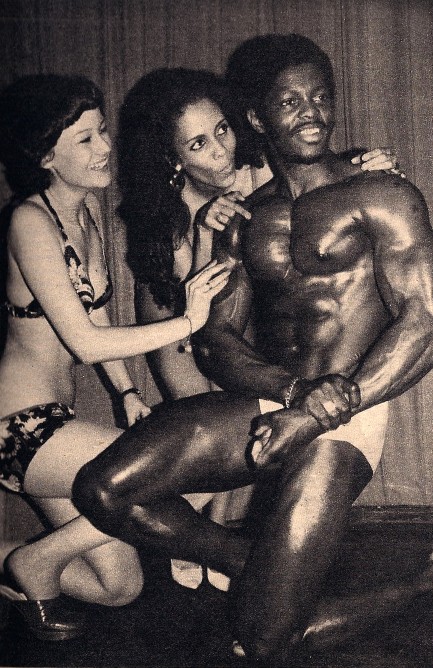 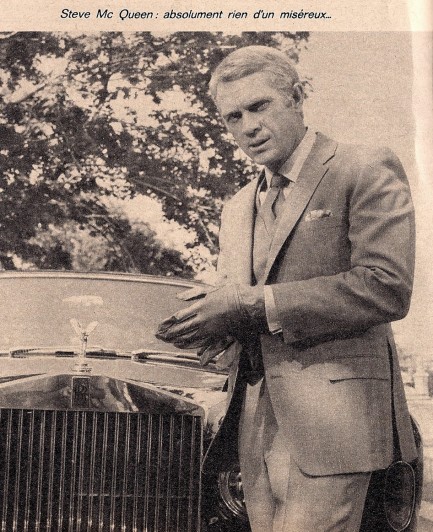 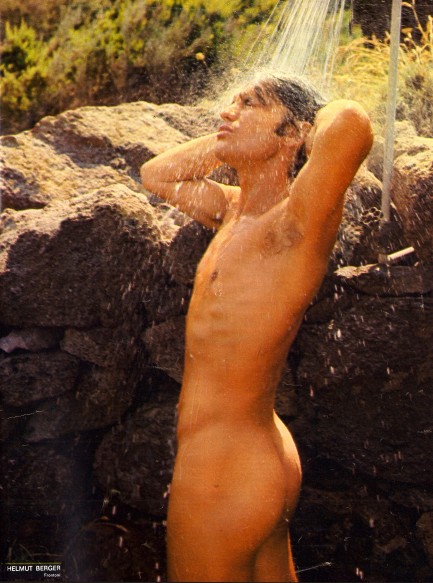 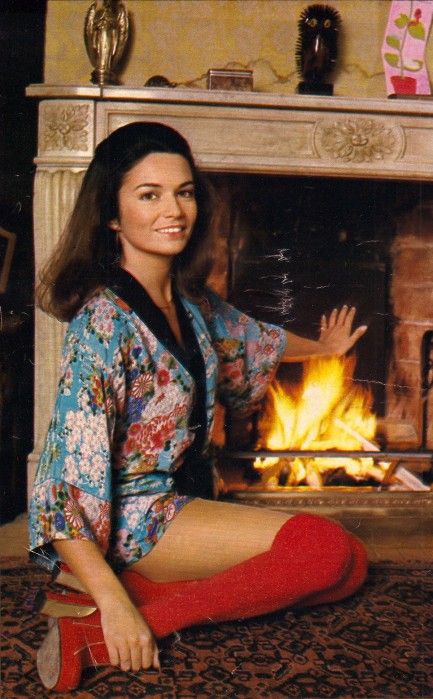 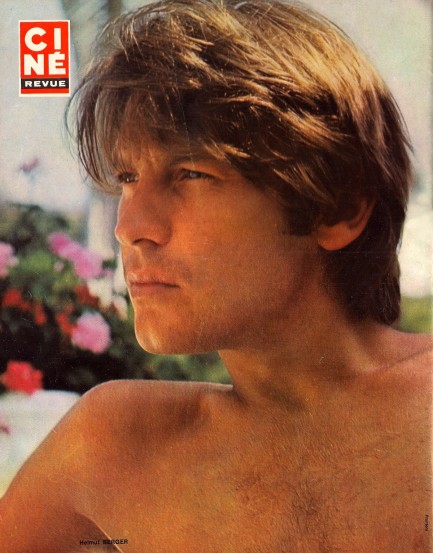
 Bargains are few when the best flea market in Paris becomes the trendiest, but there's always hope for pulp diggers. 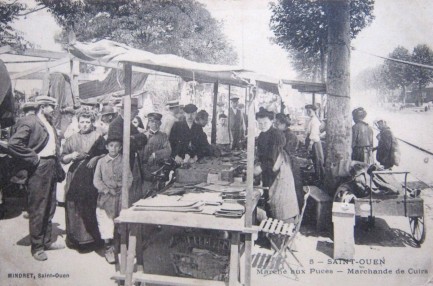
Vintage book seekers in Paris often focus their efforts on Le Marché aux Puces de Saint-Ouen, or the Saint-Ouen Flea Market. Operating since 1870, as you see in the vintage postcard above, the seventeen-acre site is located north of the 18th arrondissment, outside the Boulevard Périphérique encompassing the historic center of the city. Here thousands of vendors sell every item imaginable—furniture, board games, musical instruments, électrodomestiques, vinyl records, jewelry, art and more. There are also many cafés on site, and the combination of all this makes the market a popular destination. If you’re headed to Paris we recommend the place. Some unfavorable reviews focus on the prices, which we agree are not low, but this is less a true flea market than a rarities market—i.e., bargains are thin on the ground. But for pulp diggers it’s nice. Even sellers who don’t specialize in vintage publications sometimes keep a stash of books and magazines around because they’re just the sort of low cost items that bring browsers into the stalls.
Also on the subject of reviews, we saw some suggesting the market is unsafe. You have to scratch your head at some people’s fears. 120,000 people visit the Saint-Ouen during its busiest weekends and in no part of it could you manage to be more than twenty feet from other shoppers. It’s possible pickpockets may lurk, but that's true in any crowded spot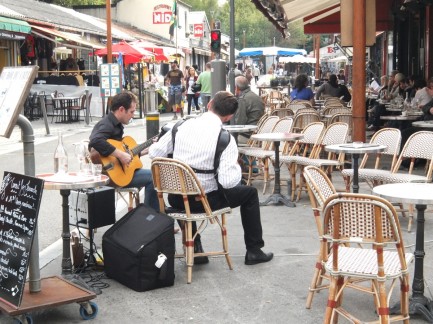 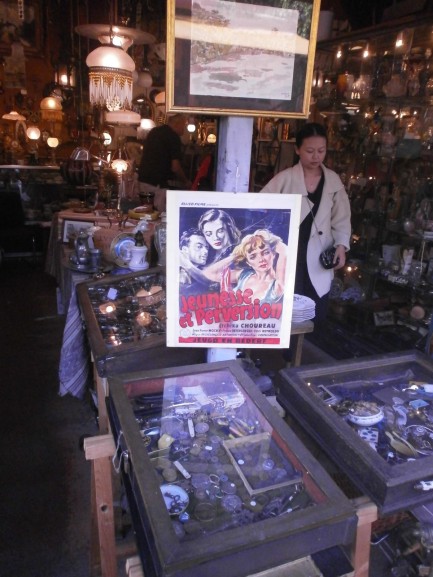 in any big city in any country. Take the standard precautions, and then enjoy yourself—that's the only advice needed here. Oh, and bring good shoes. If this is indeed a flea market—disputed, as we mentioned earlier—then it's the largest in the world. in any big city in any country. Take the standard precautions, and then enjoy yourself—that's the only advice needed here. Oh, and bring good shoes. If this is indeed a flea market—disputed, as we mentioned earlier—then it's the largest in the world.
So, what did we buy? We came across a huge stack of Paris-Hollywood magazines, several tattered issues of Ciné-Revue, and plenty of old books. Budget mattered, but luckily the books and magazines were reasonably priced and every vendor we interacted with bargained willingly, even cheerfully. In the end we managed some good purchases, supplemented by crisp digital photos of the covers of items we couldn’t afford to acquire. A tweak in Photoshop and they’re almost as good as scans. We’ll share all of those in upcoming days.
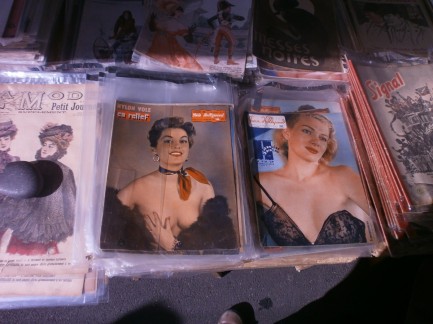 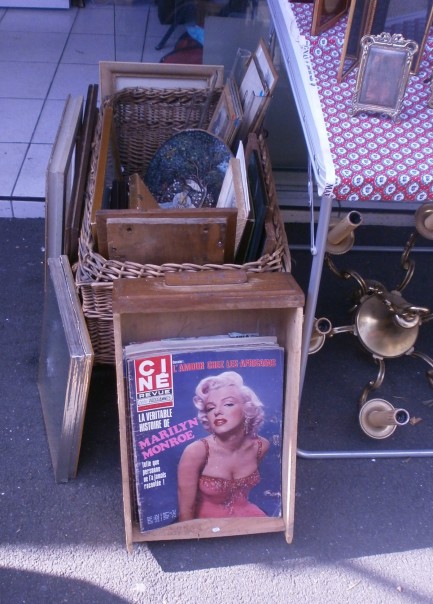
|
 |

The headlines that mattered yesteryear.
2003—Hope Dies
Film legend Bob Hope dies of pneumonia two months after celebrating his 100th birthday. 1945—Churchill Given the Sack
In spite of admiring Winston Churchill as a great wartime leader, Britons elect
Clement Attlee the nation's new prime minister in a sweeping victory for the Labour Party over the Conservatives. 1952—Evita Peron Dies
Eva Duarte de Peron, aka Evita, wife of the president of the Argentine Republic, dies from cancer at age 33. Evita had brought the working classes into a position of political power never witnessed before, but was hated by the nation's powerful military class. She is lain to rest in Milan, Italy in a secret grave under a nun's name, but is eventually returned to Argentina for reburial beside her husband in 1974. 1943—Mussolini Calls It Quits
Italian dictator Benito Mussolini steps down as head of the armed forces and the government. It soon becomes clear that Il Duce did not relinquish power voluntarily, but was forced to resign after former Fascist colleagues turned against him. He is later installed by Germany as leader of the Italian Social Republic in the north of the country, but is killed by partisans in 1945.
|

|
|

It's easy. We have an uploader that makes it a snap. Use it to submit your art, text, header, and subhead. Your post can be funny, serious, or anything in between, as long as it's vintage pulp. You'll get a byline and experience the fleeting pride of free authorship. We'll edit your post for typos, but the rest is up to you. Click here to give us your best shot.

|
|























 in any big city in any country. Take the standard precautions, and then enjoy yourself—that's the only advice needed here. Oh, and bring good shoes. If this is indeed a flea market—disputed, as we mentioned earlier—then it's the largest in the world.
in any big city in any country. Take the standard precautions, and then enjoy yourself—that's the only advice needed here. Oh, and bring good shoes. If this is indeed a flea market—disputed, as we mentioned earlier—then it's the largest in the world.





































































